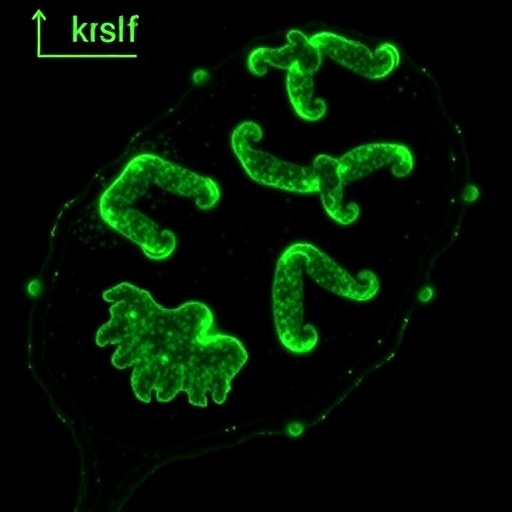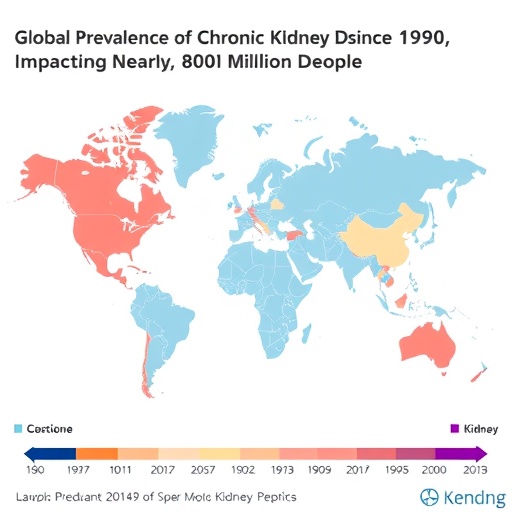In a groundbreaking new study set to transform our understanding of brain infections, researchers have unveiled how a specific subset of immune cells—CD4 T cells—invade the brain and trigger a profound inflammatory response during cryptococcal meningitis in mice. This discovery sheds light on the intricate cellular interplay that exacerbates this often deadly fungal infection of the central nervous system, opening potential pathways for novel therapeutic interventions.
Cryptococcal meningitis, caused by the encapsulated yeast Cryptococcus neoformans, is a life-threatening fungal disease primarily affecting immunocompromised individuals, including those with HIV/AIDS. The infection invades the brain’s protective barriers, resulting in severe inflammation, neurological damage, and often death. Traditionally, much of the focus has been on controlling the fungal pathogen itself, but this new research highlights how the body’s own immune response paradoxically amplifies disease severity.
At the heart of this investigation are microglia, the brain’s resident immune cells. Microglia perform critical surveillance functions within the central nervous system, identifying and responding to pathogens. However, when excessively activated, these cells can release a storm of inflammatory signals that damage neural tissue. The study reveals that the presence of brain-infiltrating CD4 T cells—key players in adaptive immunity—drives the proliferation of inflammatory microglia, intensifying the detrimental immune environment during infection.
Using sophisticated mouse models of cryptococcal meningitis, the research team demonstrated that after the fungal pathogen breaches the central nervous system, CD4 T cells migrate into the brain parenchyma and interact directly or indirectly with microglia. This interaction was shown to accelerate microglial division and transformation into a hyper-inflammatory state. These hyperactive microglial cells then release pro-inflammatory cytokines and chemokines, fueling a vicious cycle of neuroinflammation that contributes to tissue damage.
This finding challenges previous assumptions that microglial activation was primarily a consequence of the fungal presence itself and underscores the critical role of T cells in shaping the immune landscape during fungal brain infections. It suggests that the inflammatory response is not merely a straightforward defense mechanism but a complex and potentially self-destructive biological phenomenon.
Technically, the investigators employed cutting-edge single-cell RNA sequencing to delineate the heterogeneity of brain-infiltrating immune cells during infection. This approach allowed precise identification of gene expression profiles unique to brain CD4 T cells and microglia. The analysis revealed an upregulation of genes associated with cell proliferation and inflammatory signaling pathways, revealing molecular signatures underlying the observed cellular behaviors.
Moreover, through in vivo imaging techniques and flow cytometry, the researchers tracked immune cell infiltration and microglial proliferation dynamics in real-time. The integration of these methodologies provided compelling evidence of the causal relationship between CD4 T cell infiltration and microglial expansion, rather than a mere correlation.
Importantly, the study also highlighted that the milieu of inflammatory mediators produced by activated microglia further recruits peripheral immune cells, escalating the inflammatory insult. This complex immune crosstalk intensifies the breakdown of the blood-brain barrier, exacerbating edema and neuronal injury, which are hallmarks of severe cryptococcal disease.
From a therapeutic standpoint, these insights pave the way for innovative strategies aimed at modulating immune cell interactions in the brain. Instead of solely focusing on antifungal agents, treatments could be designed to temper the activity of CD4 T cells or inhibit microglial proliferation to mitigate inflammation-induced damage without compromising pathogen clearance.
Furthermore, the study raises intriguing questions about the balance between protective and pathological immunity in fungal meningitis. While immune responses are critical to controlling infection, unchecked inflammation clearly worsens outcomes. Understanding the tipping points that govern this balance could inform personalized medicine approaches tailored to individual immune statuses.
Beyond cryptococcal meningitis, these findings have broader implications for other neuroinflammatory disorders where T cells and microglia converge, such as multiple sclerosis and neurodegenerative diseases. The mechanisms unveiled here could guide research into the role of adaptive immune cells in modulating microglial function in diverse contexts.
The research team’s interdisciplinary approach, combining immunology, neuroscience, and fungal biology, exemplifies modern biomedical investigation’s power to unravel complex disease processes. It underscores the value of animal models that faithfully replicate human disease pathology in uncovering mechanistic insights.
The publication, appearing in Nature Communications, marks a milestone for the scientific community, particularly those invested in neuroimmunology and infectious diseases. It not only elucidates the cellular choreography during cryptococcal meningitis but also inspires a re-evaluation of how CNS infections are approached clinically.
Looking ahead, further studies are needed to dissect the signals that mediate CD4 T cell recruitment to the brain and their precise interactions with microglia at the molecular level. Understanding these pathways will be key to developing targeted interventions that disrupt pathogenic inflammation while preserving essential immune defenses.
In sum, this study delivers a compelling narrative on how the immune system’s adaptive arm paradoxically fuels an aggressive inflammatory microglial response during fungal brain infection. This paradigm shift could ultimately save lives by guiding the development of therapies that protect the brain from immune system-induced collateral damage during cryptococcal meningitis.
Subject of Research: The immunological mechanisms driving microglial proliferation and inflammation in cryptococcal meningitis, with a focus on brain-infiltrating CD4 T cells.
Article Title: Brain-infiltrating CD4 T cells drive inflammatory microglia proliferation during cryptococcal meningitis in mice.
Article References:
Hain, S., Fu, M.S., Wigg, L. et al. Brain-infiltrating CD4 T cells drive inflammatory microglia proliferation during cryptococcal meningitis in mice. Nat Commun 16, 8995 (2025). https://doi.org/10.1038/s41467-025-64034-5
Image Credits: AI Generated
Tags: adaptive immunity in fungal diseasesCD4 T cells in cryptococcal meningitiscentral nervous system inflammatory responseCryptococcus neoformans and HIV/AIDSfungal infections of the central nervous systemimmune cell interplay in cryptococcal meningitisimmune response and disease severityinflammation and neurological damagemicroglia activation in brain infectionsmicroglia and neural tissue damageresident immune cells in the braintherapeutic interventions for brain infections





